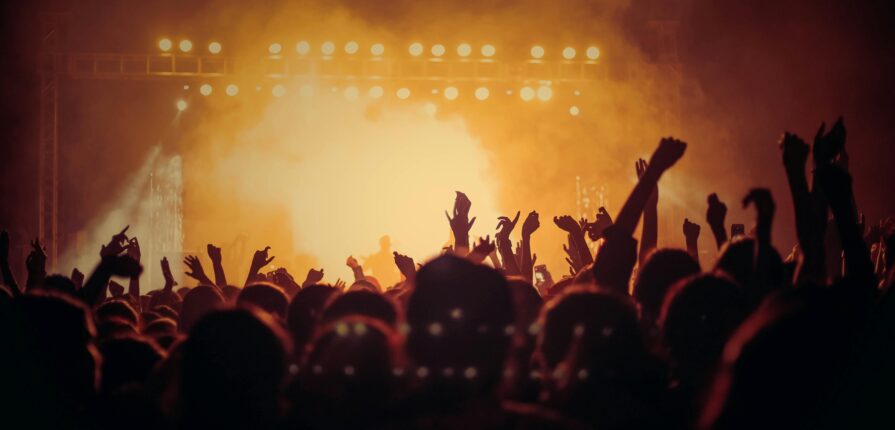Listening to your favorite song through headphones or speakers can certainly evoke emotions, but there’s something completely unique about experiencing that same music live. The energy, the unpredictability, the crowd, and the artist’s connection with the audience all come together to create an emotional experience that is difficult to replicate through a recording. Live music feels different not only because of the auditory qualities but because of the psychological, physical, and social factors that make it an unforgettable, dynamic experience.
-Tuesday, April 22
The Power of Presence: Feeling the Music Physically
One of the most distinct differences between listening to recorded music and experiencing it live is the physical sensation of sound. At a concert, music isn’t just something you hear—it’s something you feel. The **bass vibrations** ripple through the floor and resonate in your chest, the sound travels around you, and the energy from the crowd amplifies everything you hear. This multi-sensory experience is impossible to replicate when listening to music through headphones or speakers. The **acoustic properties** of live performances, with sounds bouncing off walls and reverberating in the venue, create a depth that a recorded version can’t provide.
Furthermore, the live music experience triggers mirror neurons in our brains, which fire when we watch others perform or experience emotions. When we see the artist pouring their heart into a performance, singing with passion, or playing an intense guitar solo, our brains respond as though we’re experiencing it ourselves. This psychological phenomenon deepens our emotional connection to the music, making the live performance feel more alive and personal.
The Unpredictability Factor: No Two Performances Are the Same
Unlike the perfection of studio recordings, live music is full of surprises and spontaneity. Each performance is unique, with artists often improvising, altering tempos, or extending songs in ways that don’t follow the exact pattern of the recorded version. The unexpected can happen at any moment—a surprise guest, an impromptu encore, or even a mistake that leads to an unplanned yet memorable moment. This unpredictability is what keeps live performances exciting. Every concert is a one-time experience, never to be recreated, making it something special.
In fact, the imperfections of live performances contribute to their charm. Mistakes, glitches, or technical issues add authenticity to the experience, reminding us that music is a living, evolving thing. These raw, human moments break away from the perfect, calculated nature of studio recordings, and allow both the performer and audience to connect in a more **genuine and unguarded way**.
The Collective Experience: Music as a Social Connection
While listening to music alone can be deeply meaningful, live music is a shared experience that amplifies the emotions involved. Whether you’re in a crowd of hundreds or thousands, there’s a **sense of community** that’s felt when everyone is united in appreciating the same music. As fans, we feed off the collective energy of the crowd. Singing along, clapping to the beat, and even feeling the collective excitement builds a sense of social connection something recordings can’t achieve.
Moreover, music has a powerful way of synchronizing people. Studies show that when people listen to music together, their brainwaves and even heartbeats can align, creating a deep bond with everyone in the room. This synchronization fosters an almost tribal experience, where everyone is emotionally and physically connected to one another, sharing in the joy or intensity of the moment.
The artist also plays a huge role in this collective experience. When they interact with the audience—acknowledging cheers, sharing stories, or even inviting fans to sing along—they reinforce the feeling of mutual engagement. It becomes a two-way street: the artist gives energy, and the crowd reciprocates. This back-and-forth exchange enhances the emotional experience, making the live show feel more intimate and meaningful than a recorded version ever could.
Why Live Music Stays With Us
The emotions we experience during a live concert tend to stick with us longer than those from a recording. Why is that? The answer lies in the fact that live music engages all of our senses—sight, sound, and touch—while a recording only appeals to the auditory. The vibrations of the bass, the lights, the atmosphere of the crowd, and the overall excitement contribute to multi-sensory memories that are far more likely to stay with us long after the performance ends. The energy, the adrenaline, and the rush of emotion we feel during a live show linger in our minds, creating lasting memories. tied to the experience.
In addition, dopamine, the brain’s “feel-good” chemical, is released during live performances, which is why the experience of being surrounded by music and people feels so exhilarating. This chemical response often strengthens our memories, making us more likely to recall the details of a concert months or even years later.
While recorded music is convenient and allows us to appreciate songs in their most polished form, live music offers something uniquely special. It provides an unfiltered, raw emotional experience that can’t be replicated in a studio. Whether it’s feeling the bass reverberate through your body, experiencing the spontaneity of an artist’s performance, or sharing the energy with a crowd of like-minded fans, live music creates a connection between the listener and the music that is unmatched by recordings. So, the next time you’re at a concert, remember that you’re not just listening to a song—you’re living it, feeling it, and experiencing it in real-time. The magic of live music is the kind of experience that stays with you long after the final note fades away.


